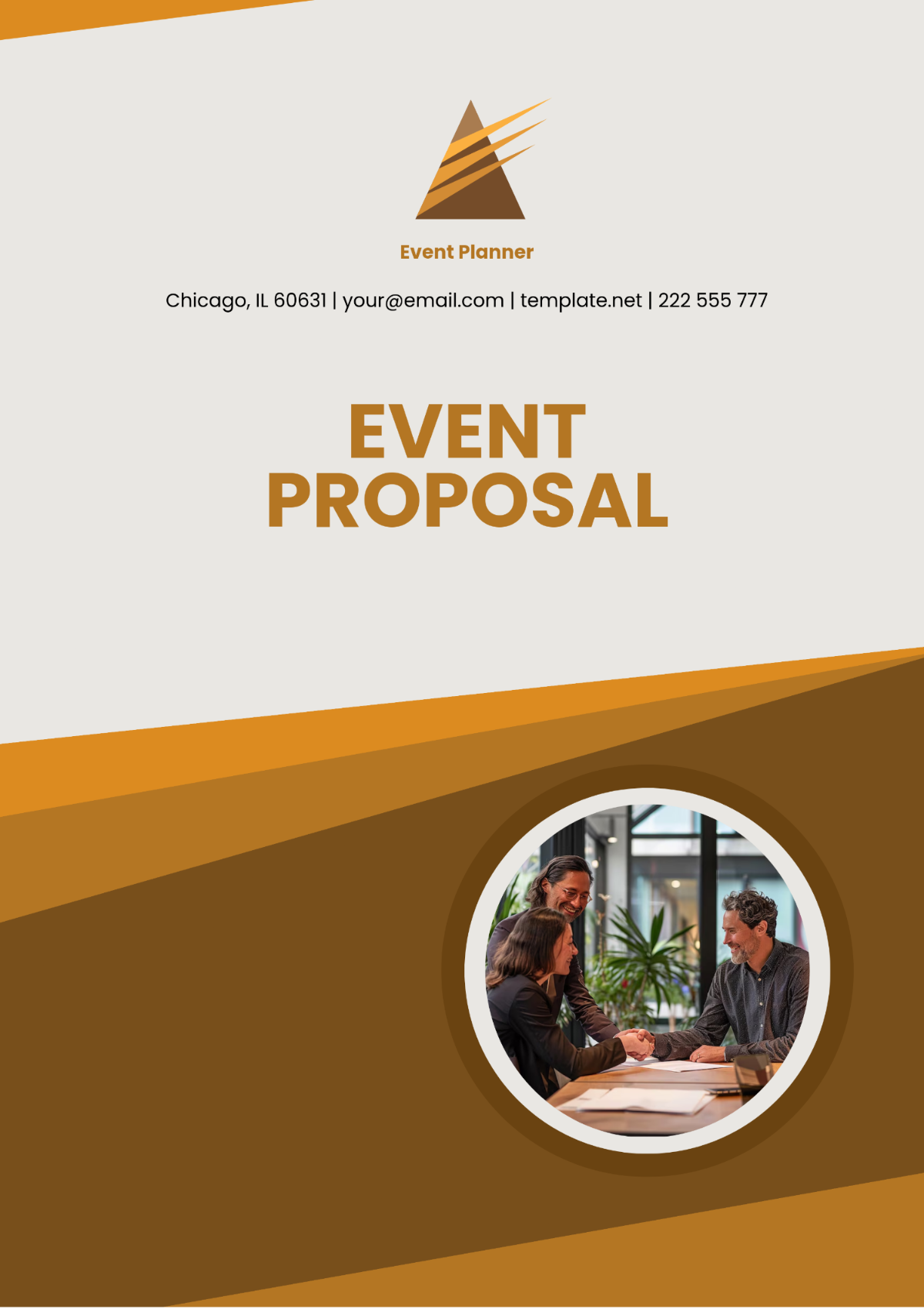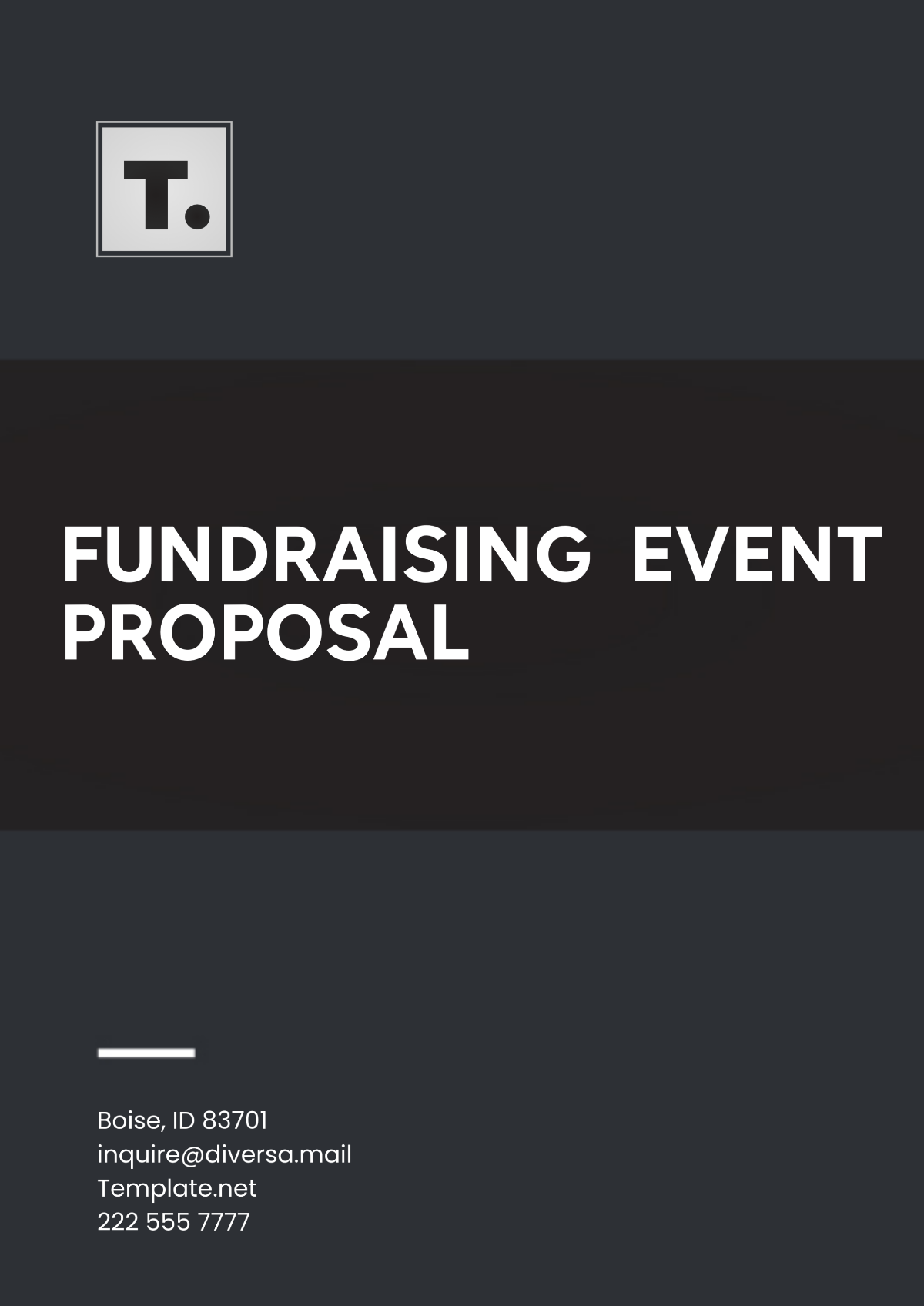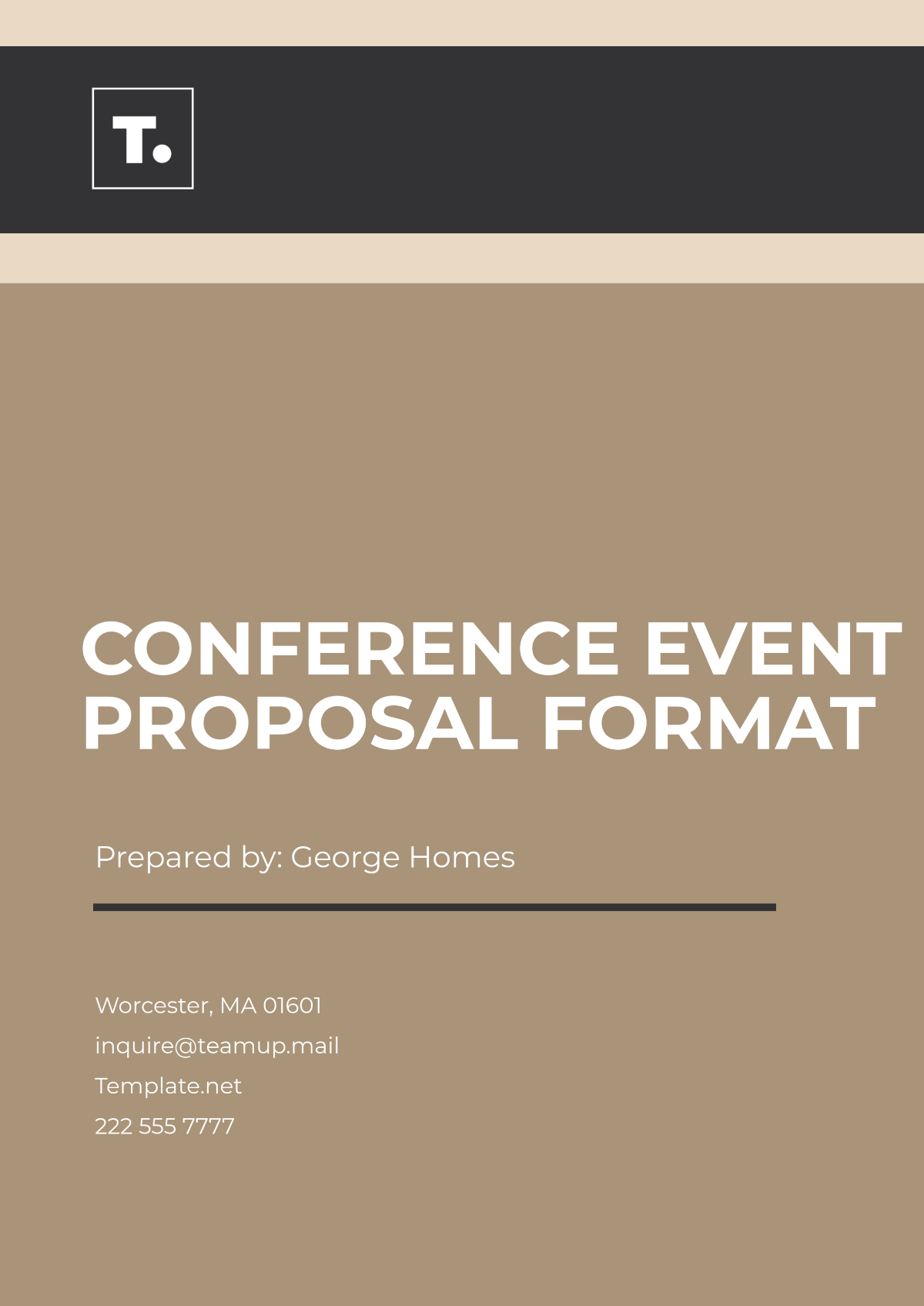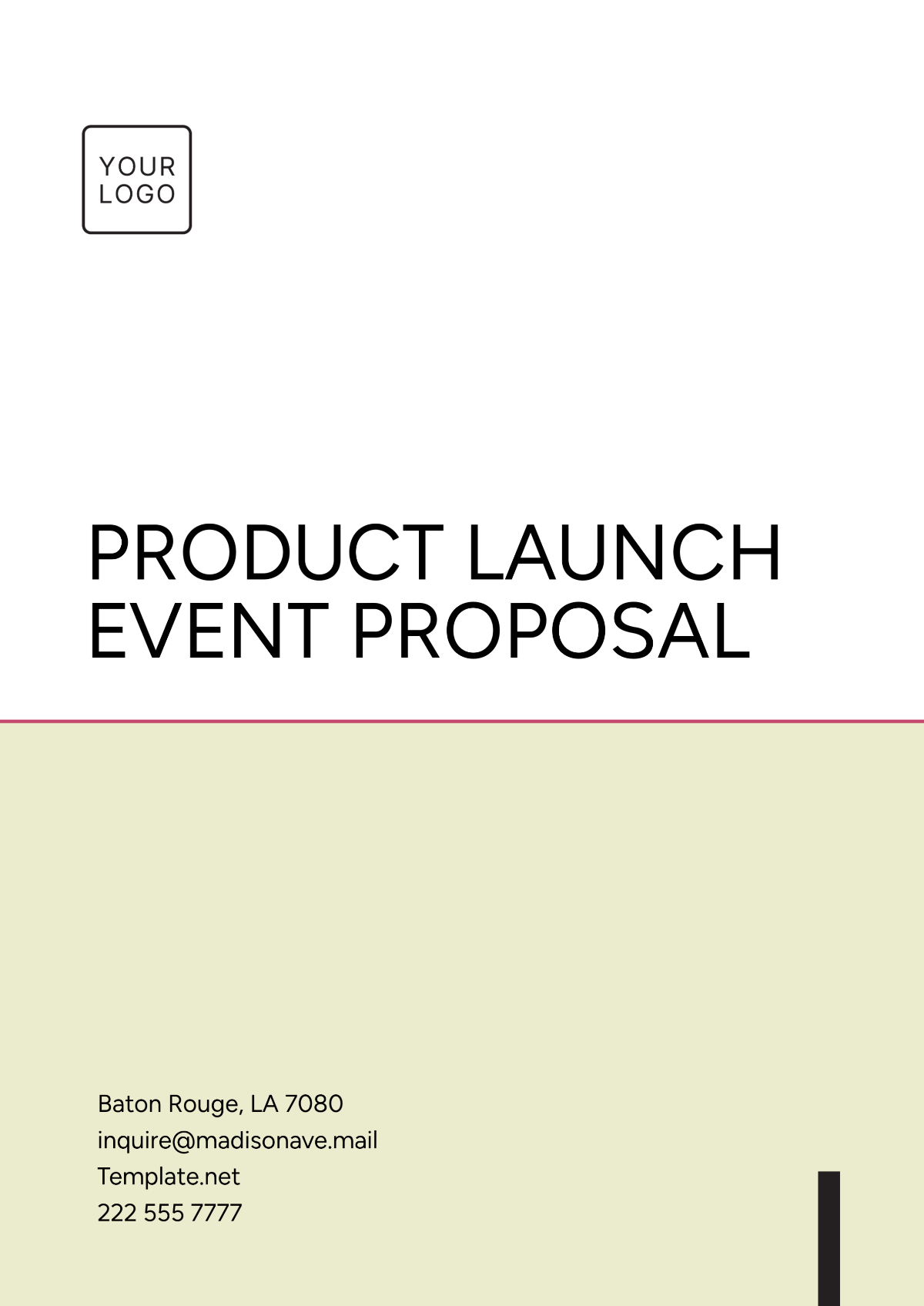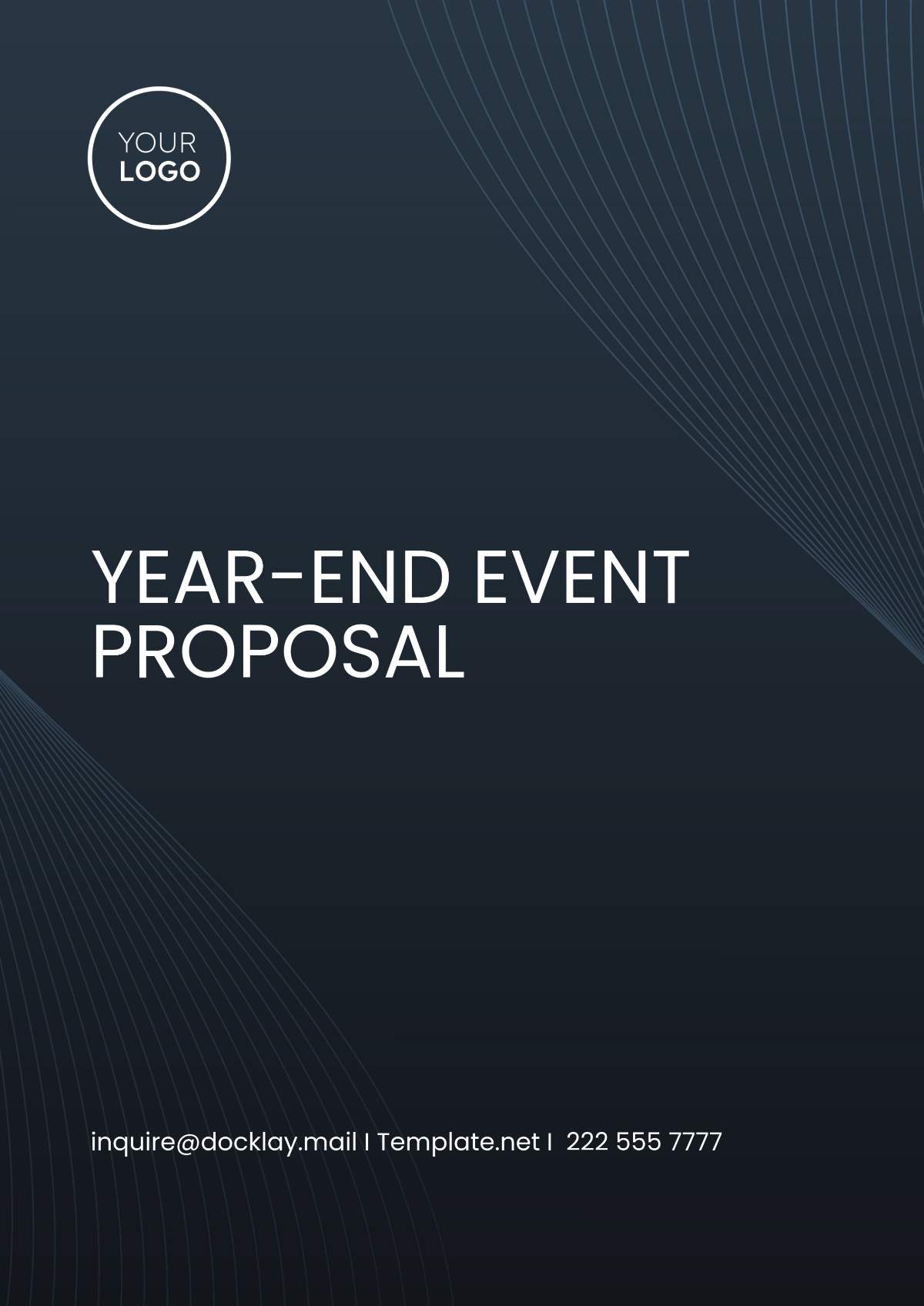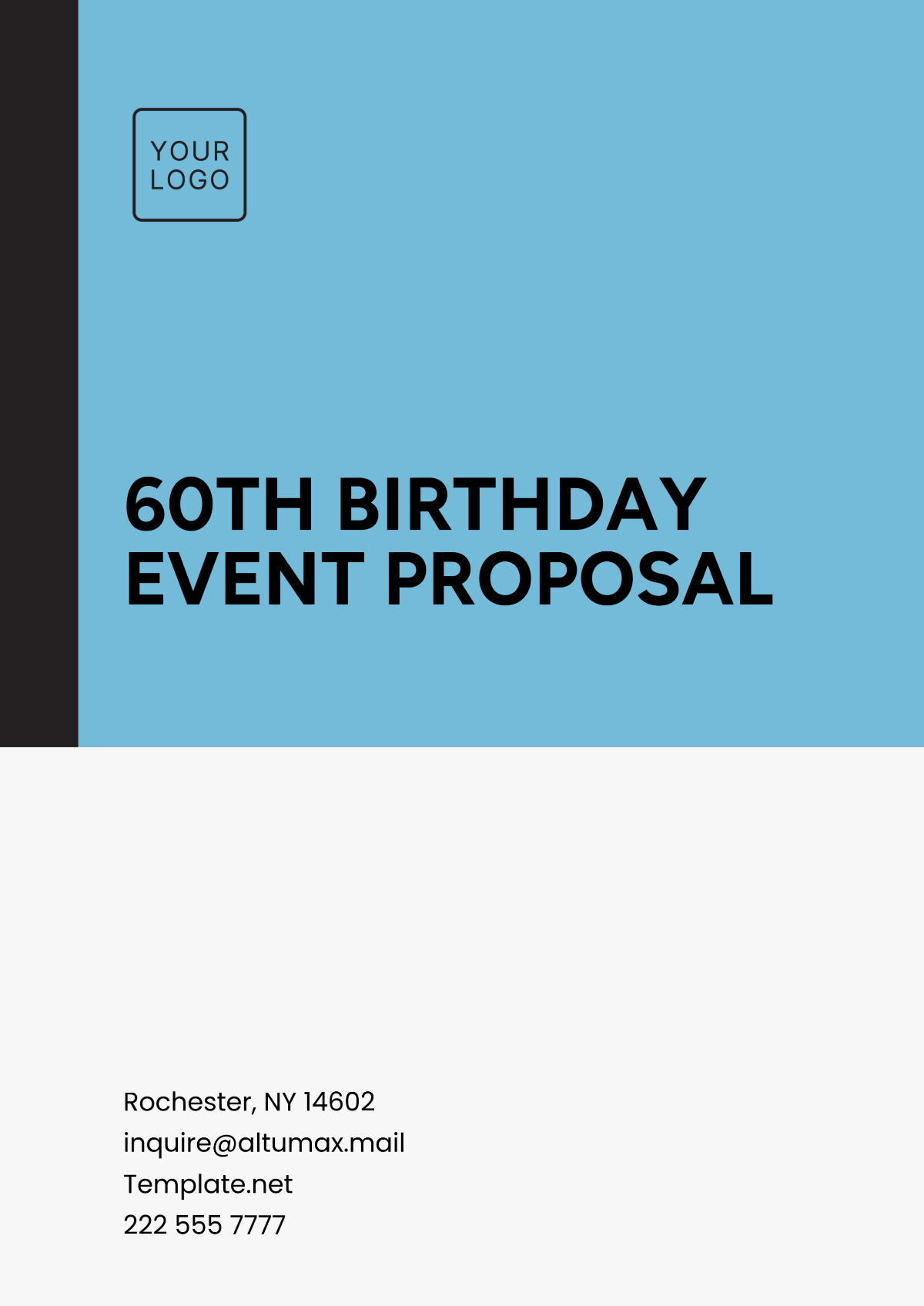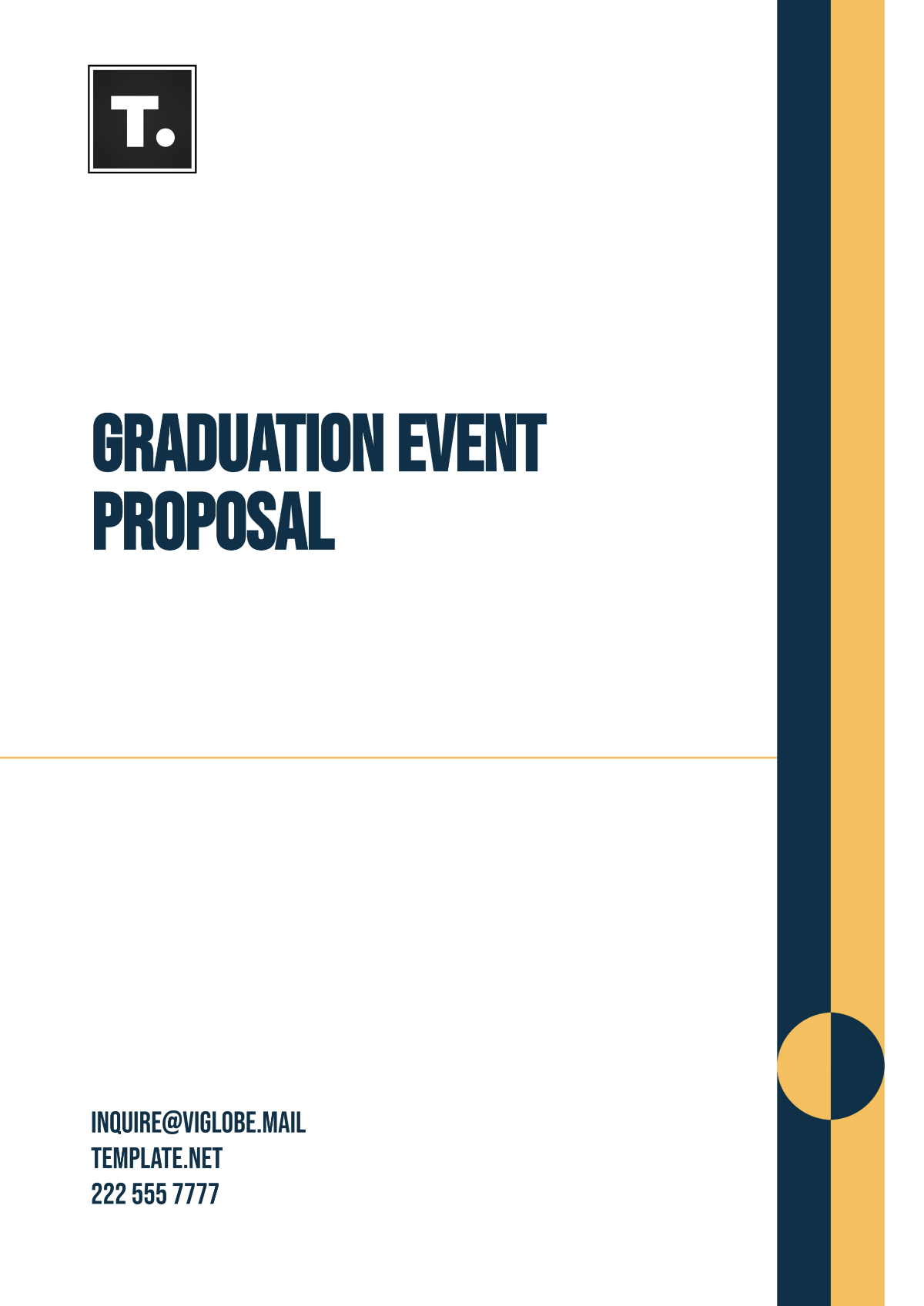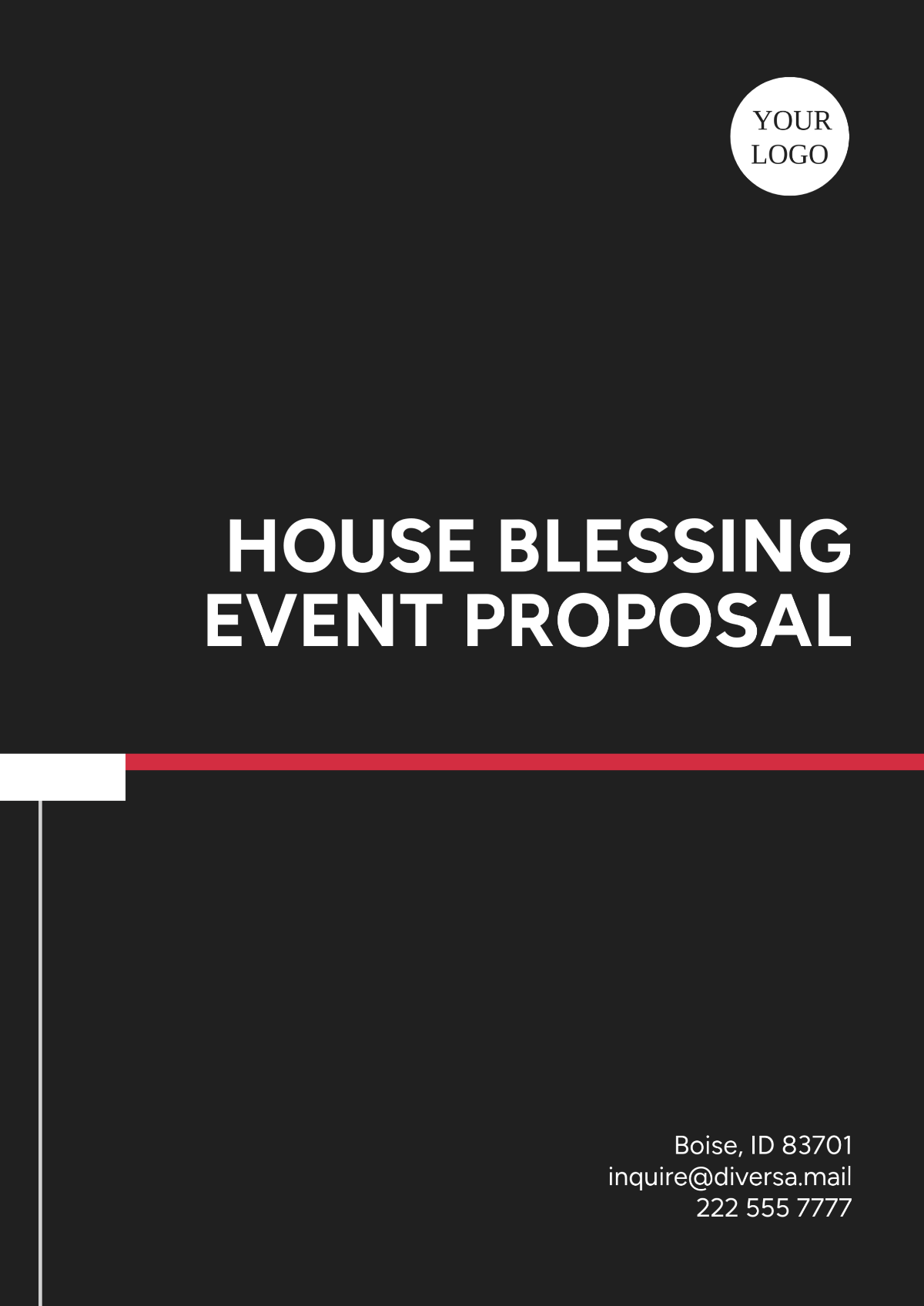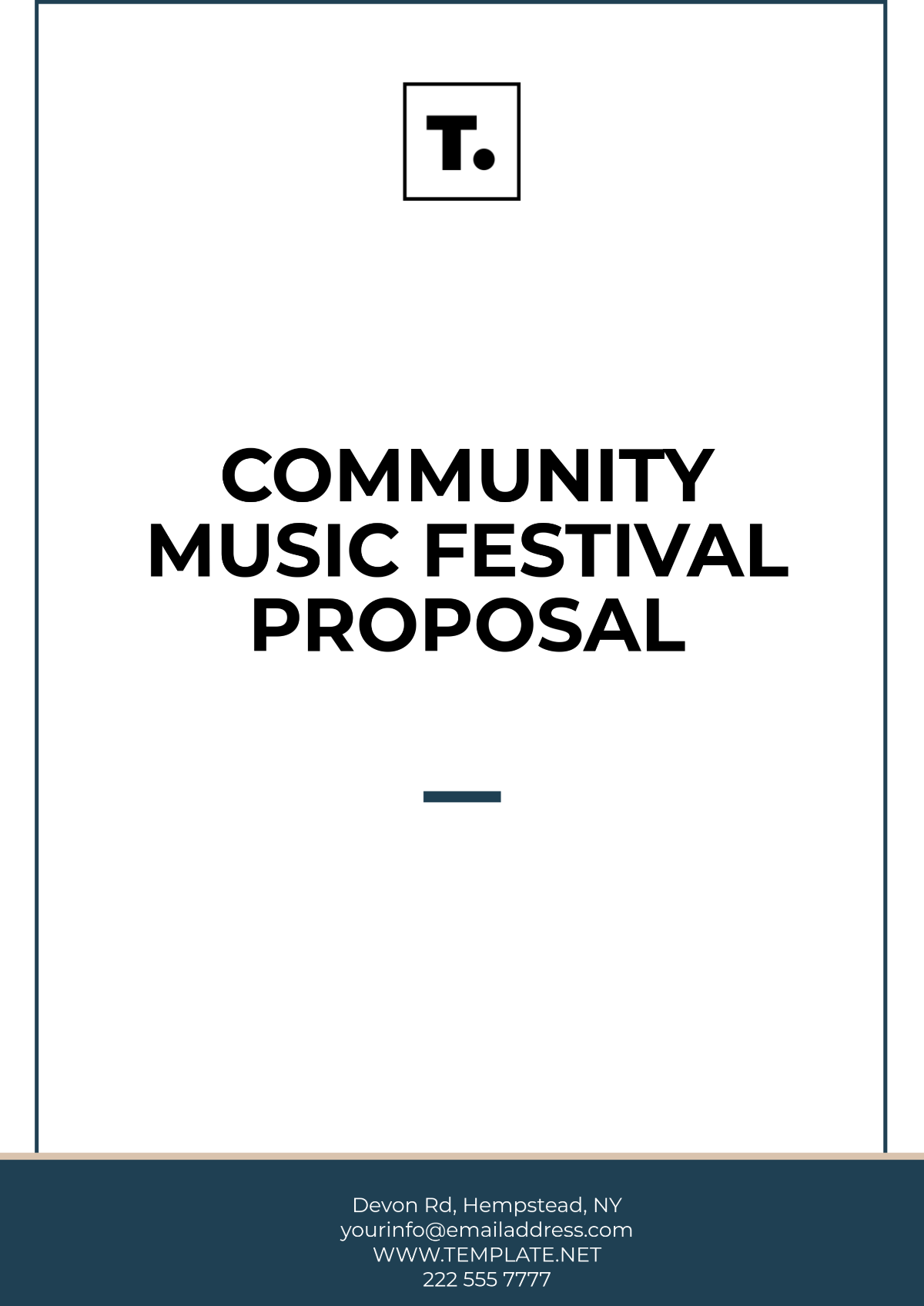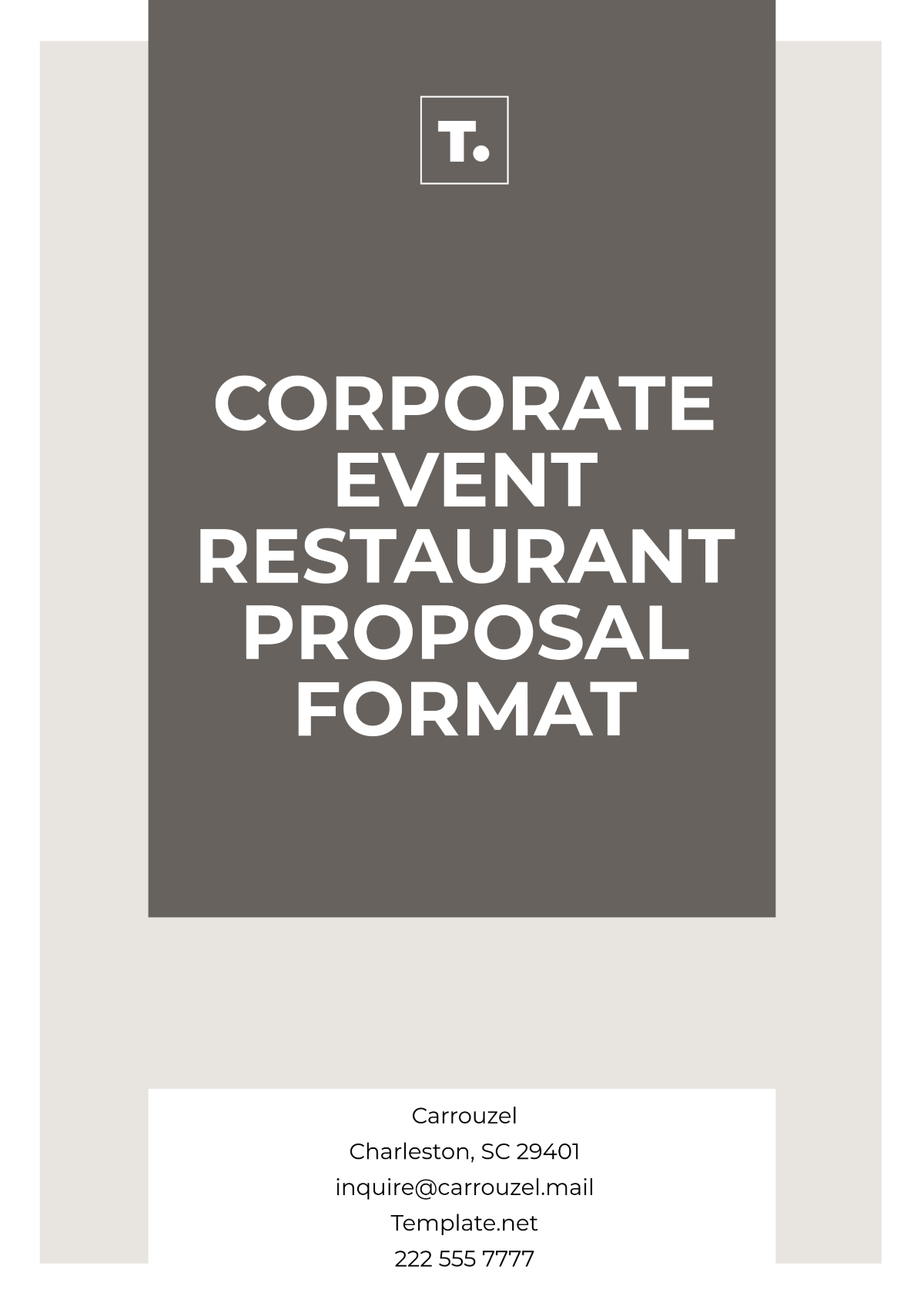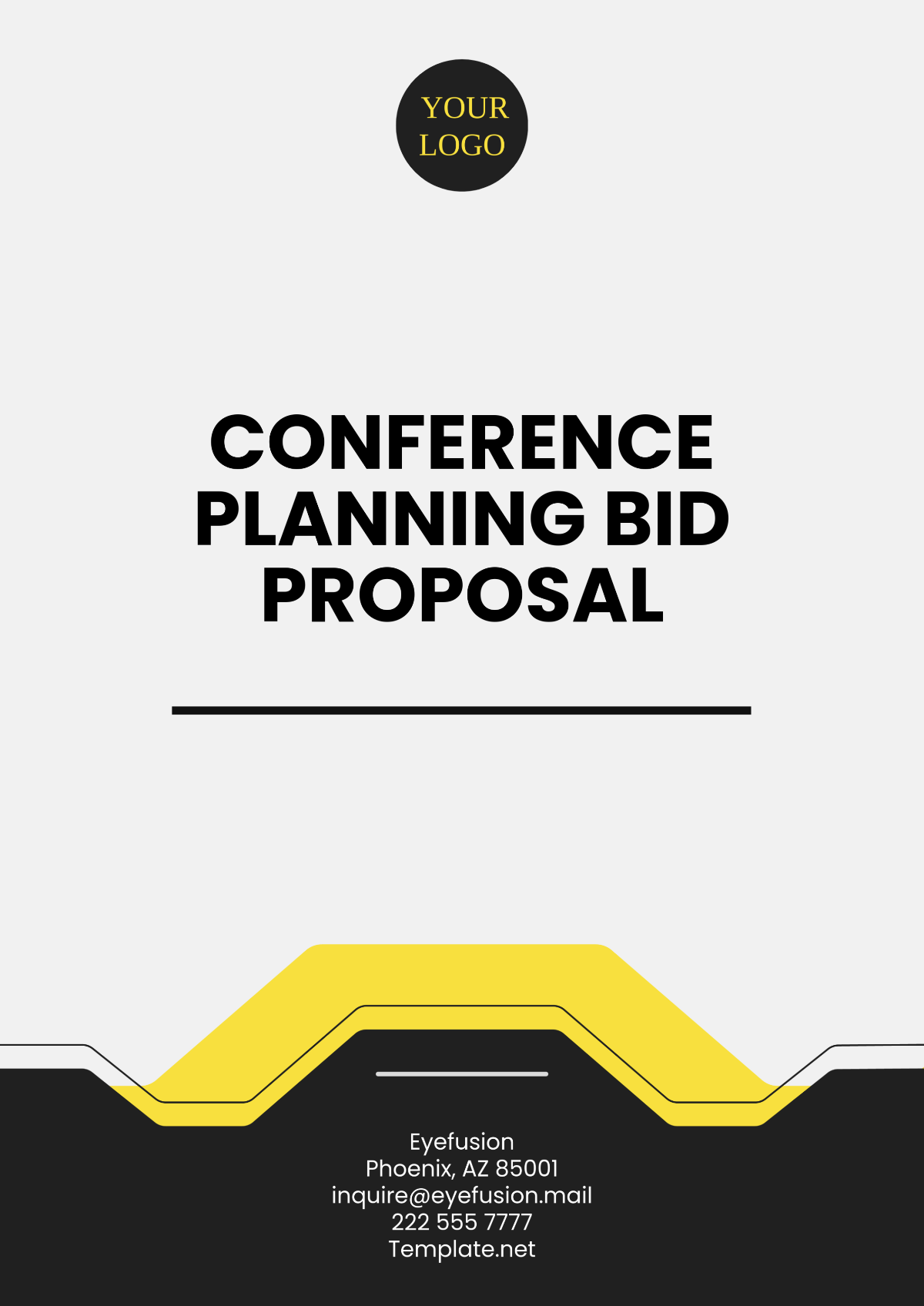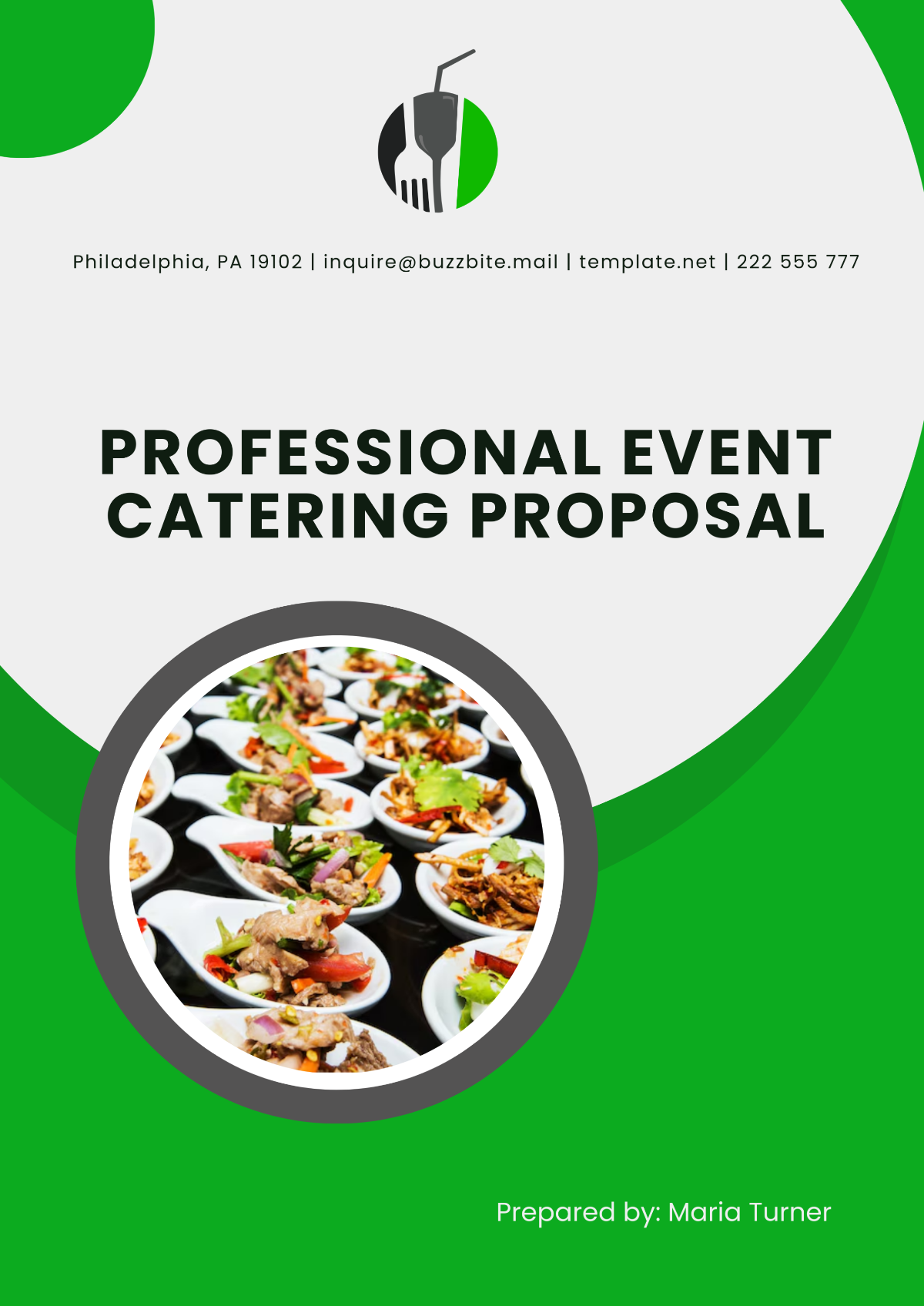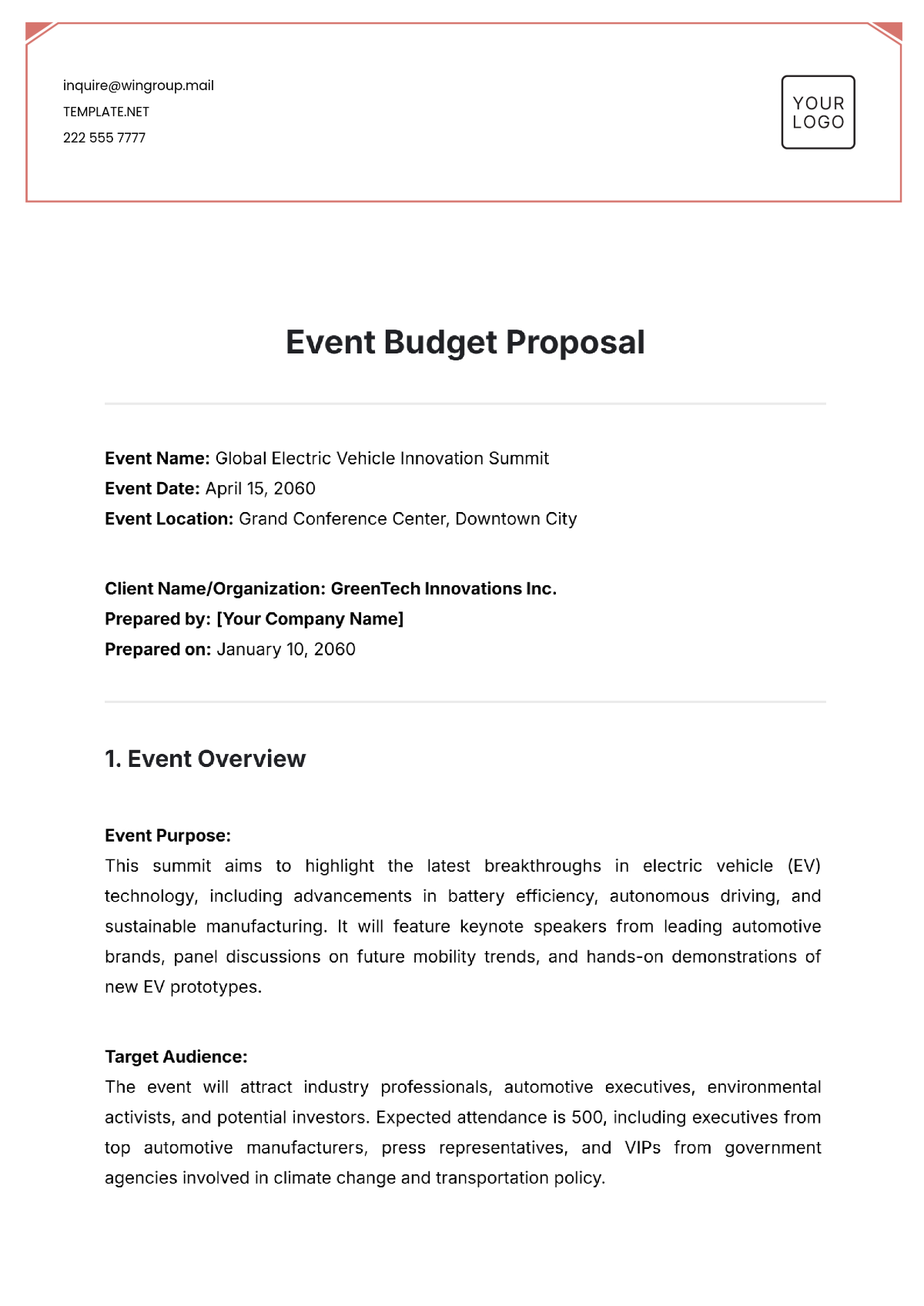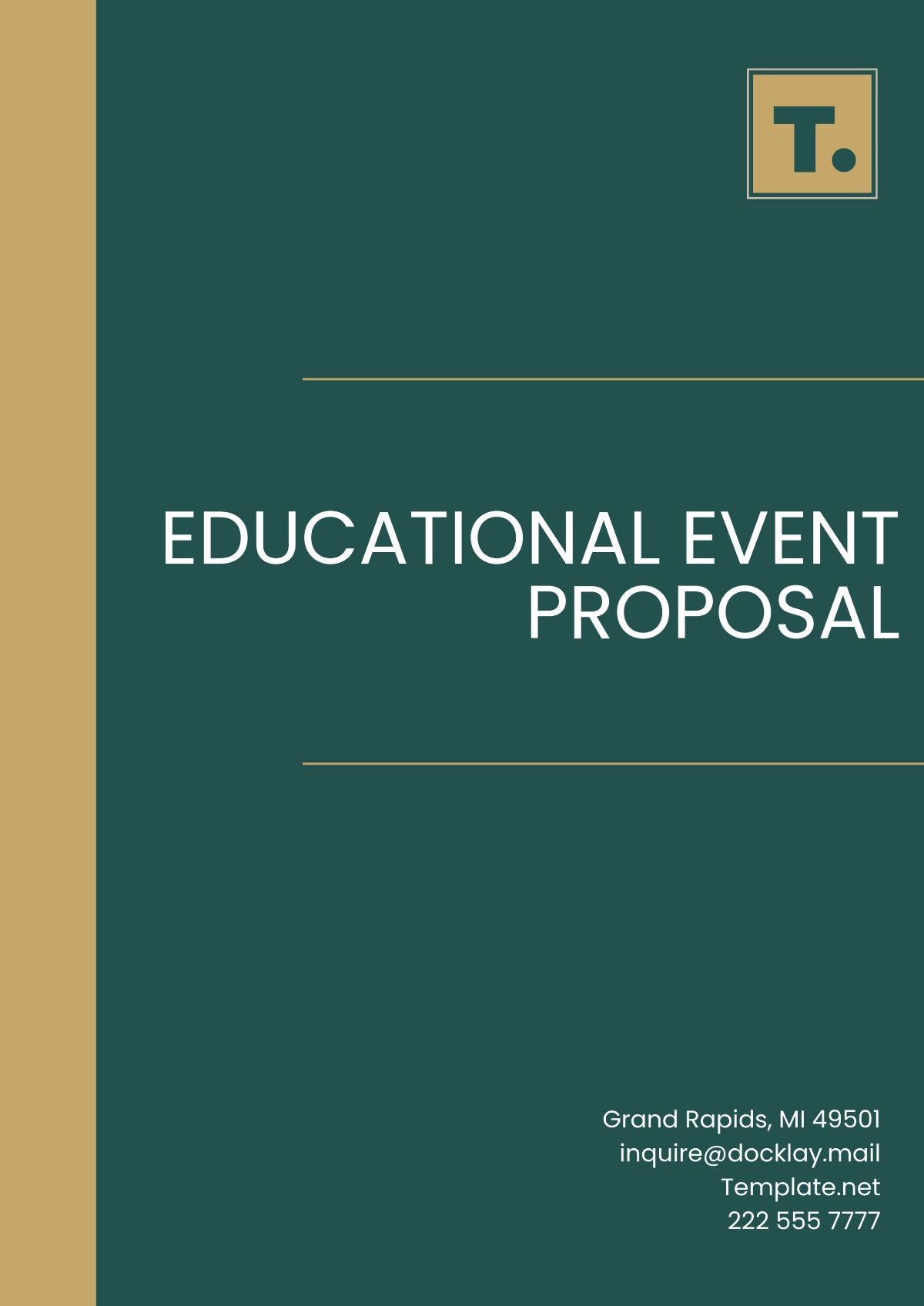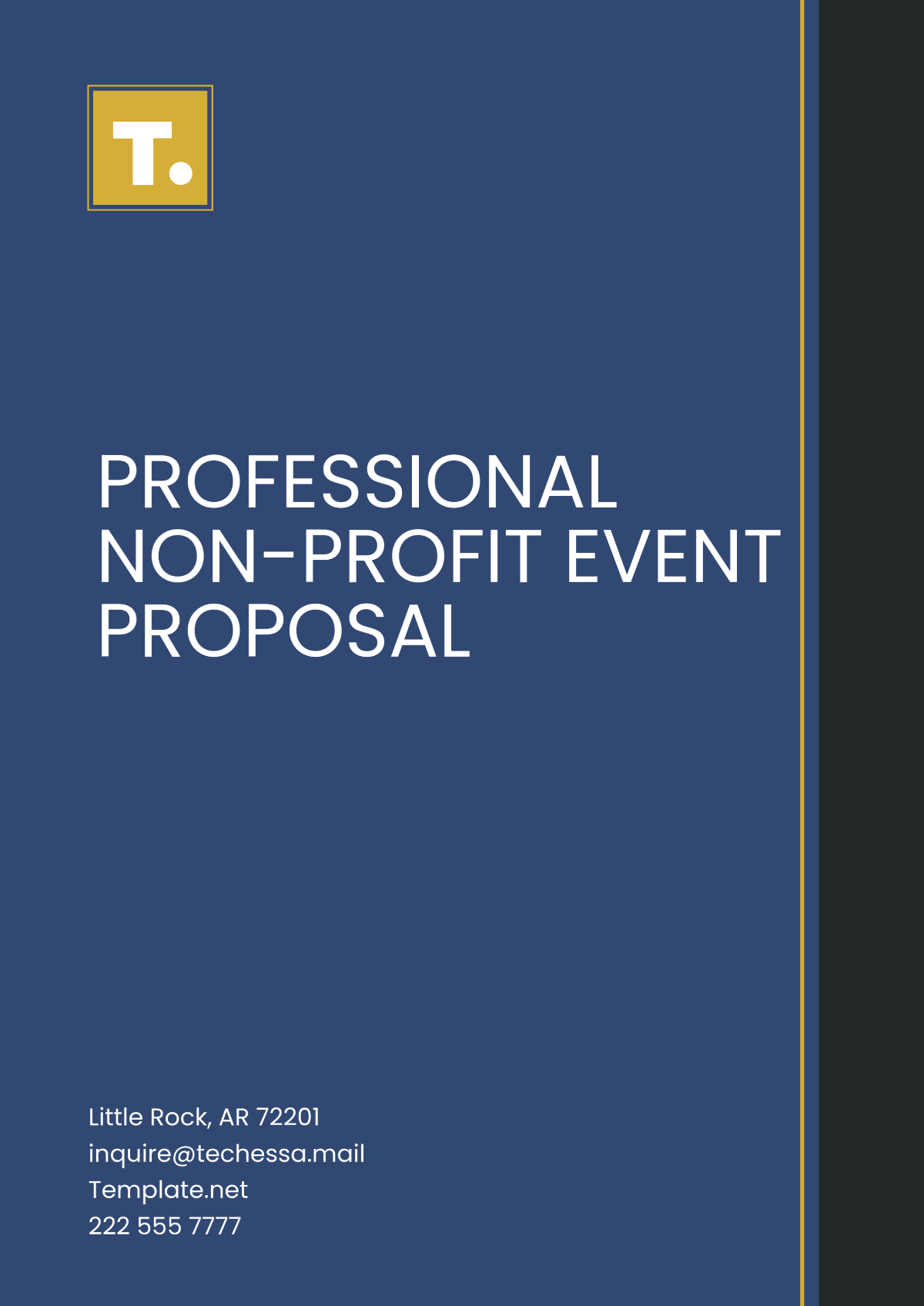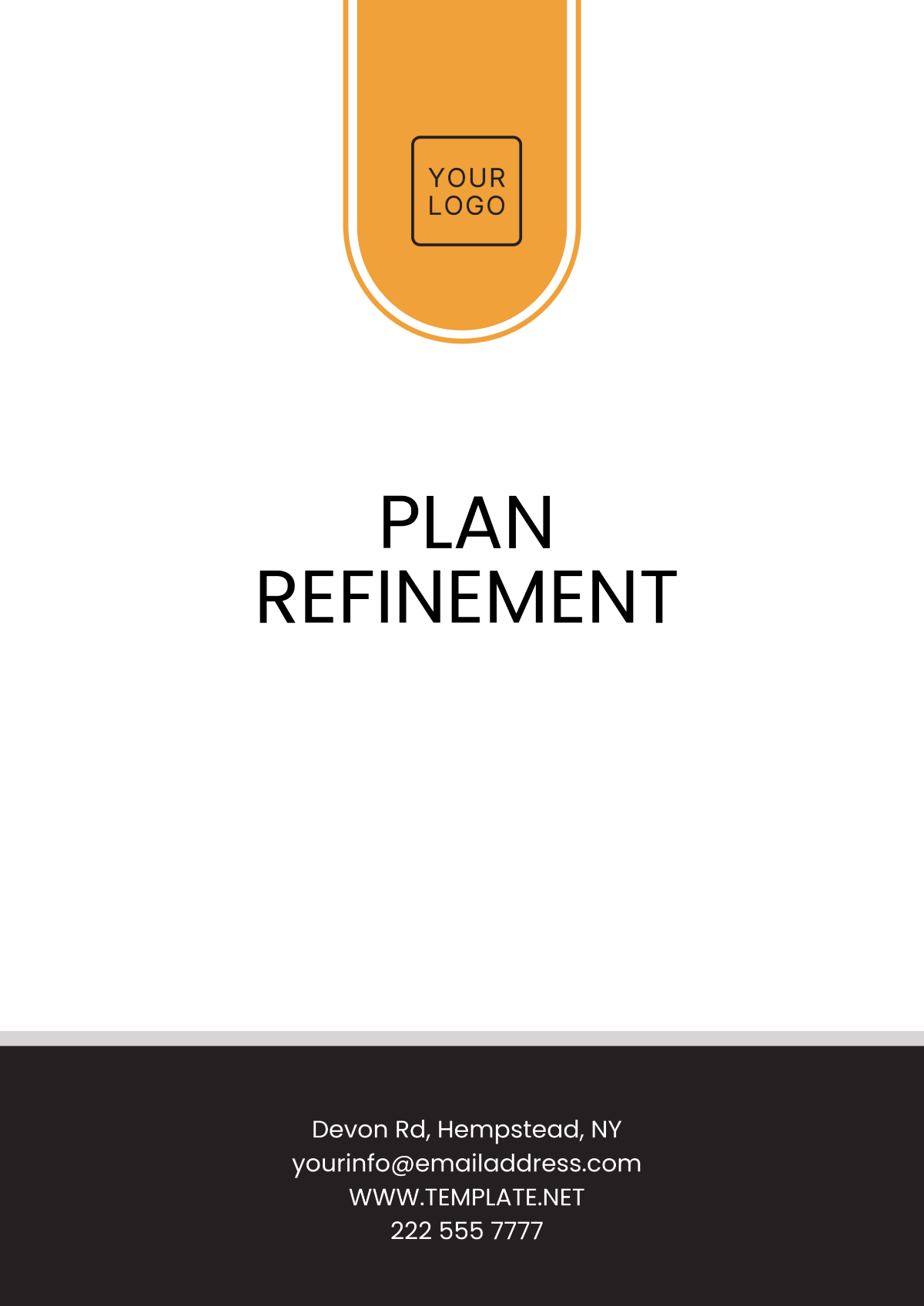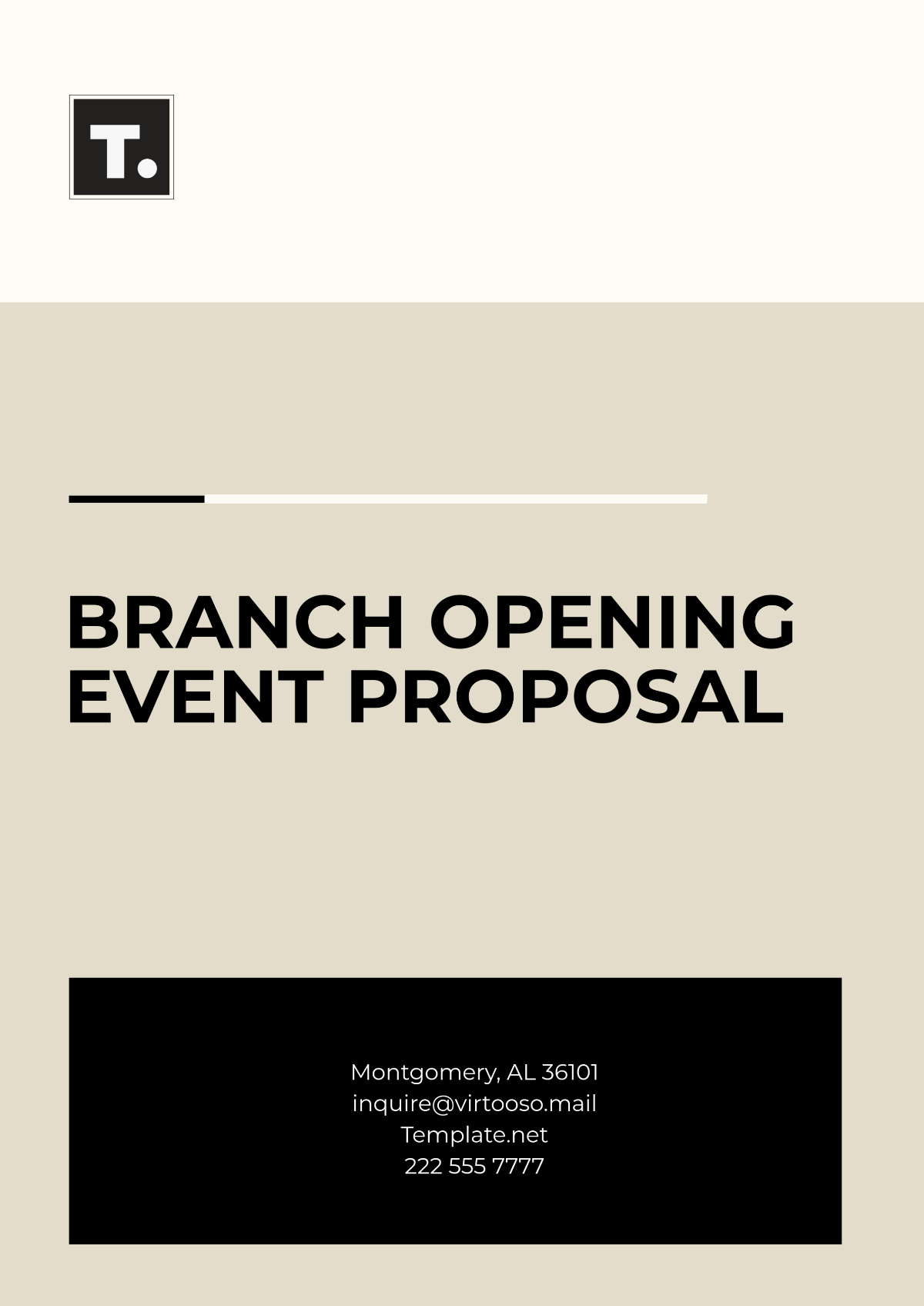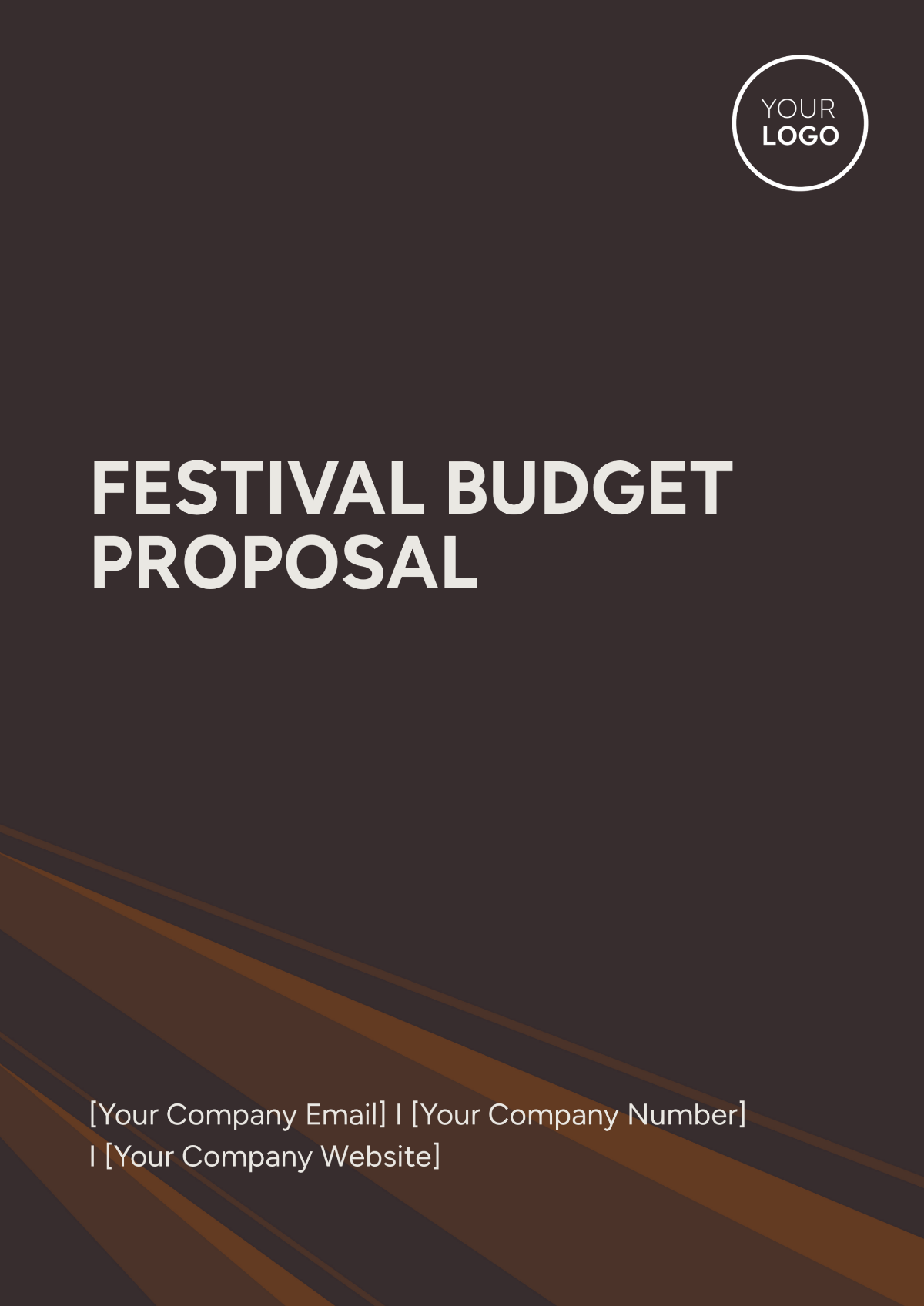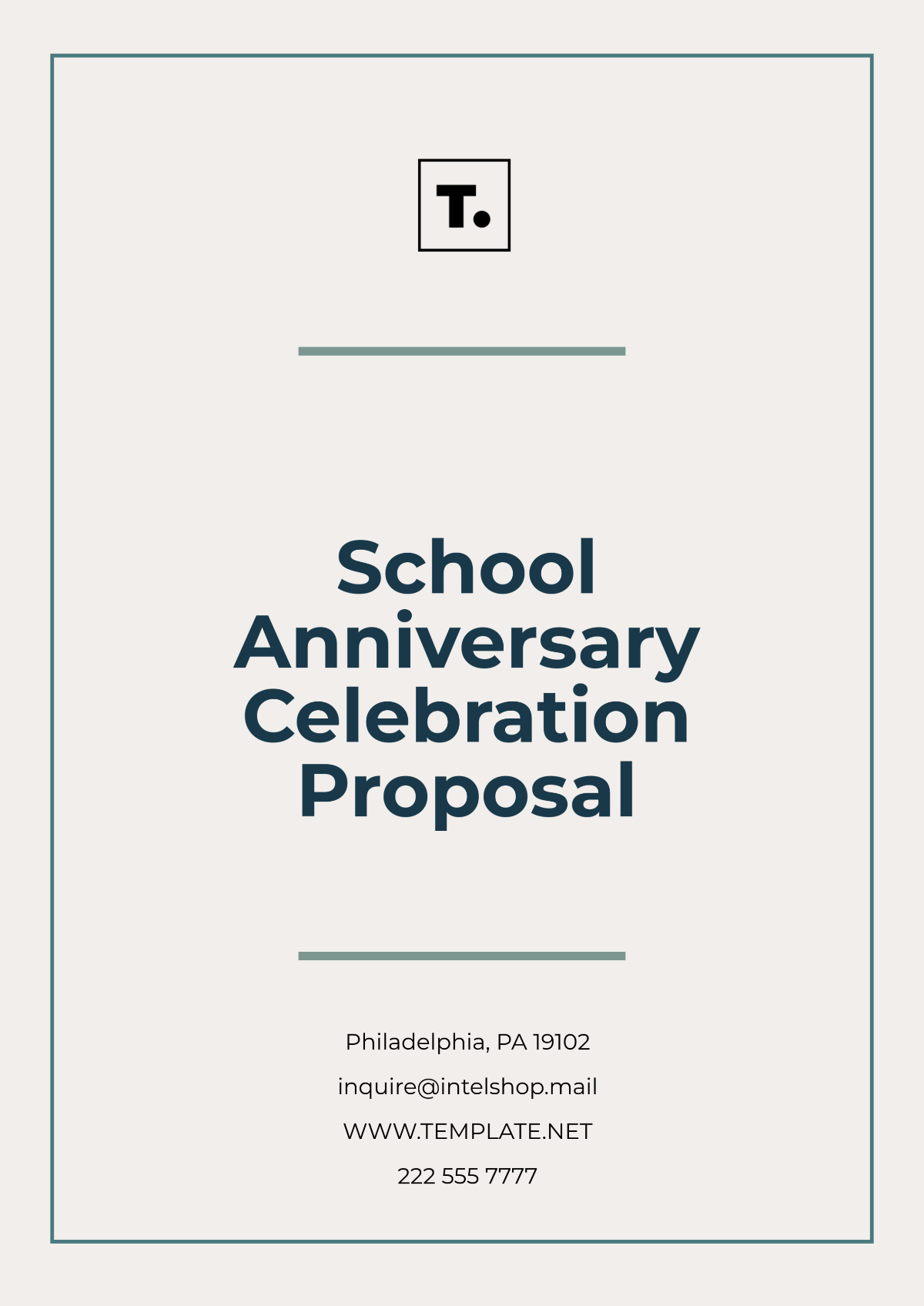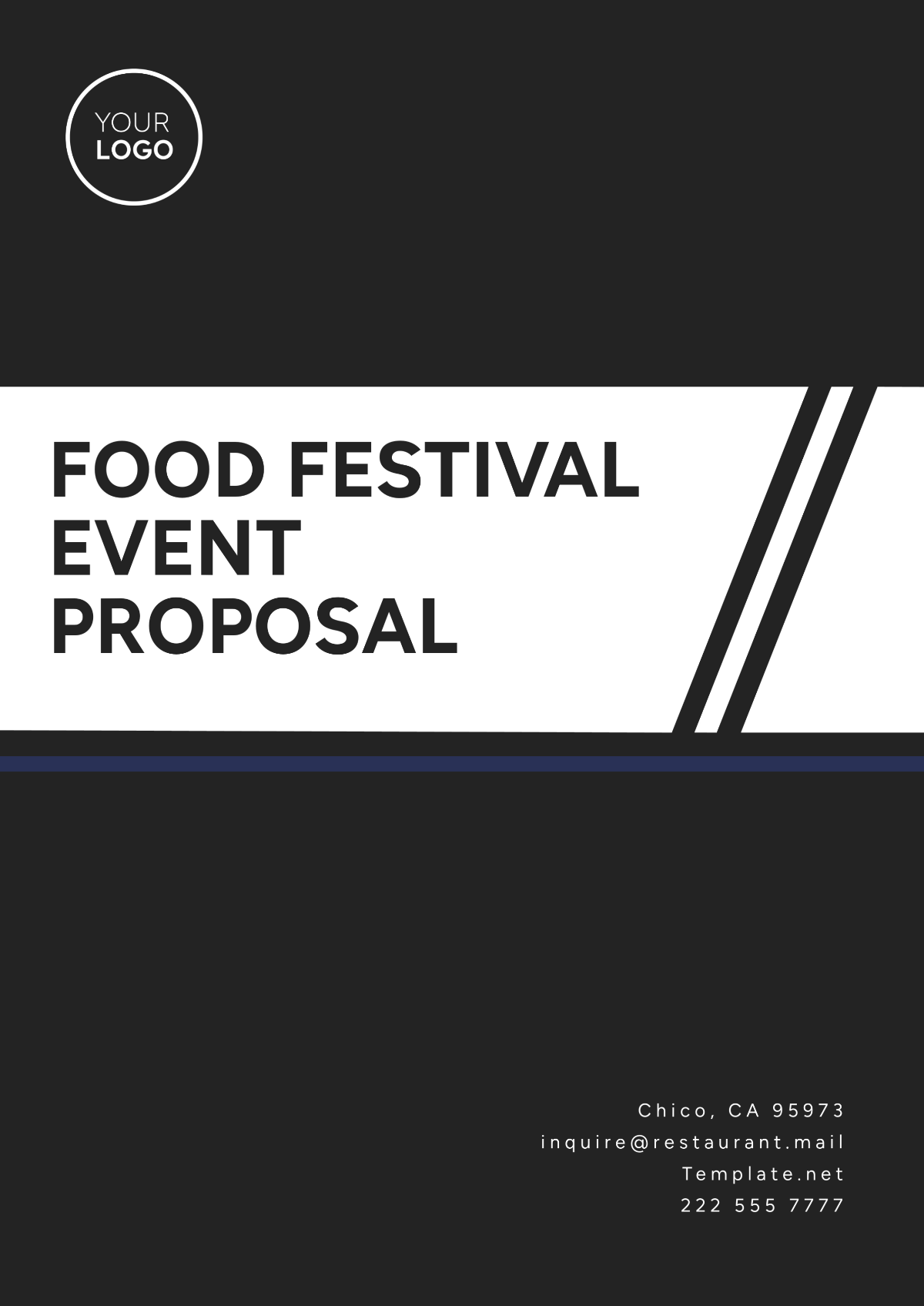Simple Church Event Proposal
1. Introduction
1.1 Overview
The Simple Church Event Proposal is a meticulously crafted document that outlines the comprehensive plan for [Event Name], hosted by [Your Company Name]. This proposal serves as a detailed guide to ensure every aspect of the event is thoughtfully planned and executed. It covers all necessary elements, including logistics, financial considerations, and event objectives. Our goal is to provide a clear and structured plan that will help us achieve a successful and impactful event, fostering community engagement and meeting our stated objectives.
1.2 Purpose of the Proposal
The primary purpose of this proposal is to articulate a well-defined plan for the execution of [Event Name], including all critical aspects such as objectives, scheduling, budgeting, and expected outcomes. This document is intended to align all stakeholders, from internal teams to external partners and sponsors, ensuring everyone is on the same page regarding the event's vision and execution strategy. By providing a thorough overview and detailed plans, we aim to facilitate smooth operations and successful event delivery.
1.3 Background Information
1.3.1 About [Your Company Name]
[Your Company Name] is committed to making a positive impact in our community through a variety of events and programs. Our organization has a rich history of successfully organizing events that bring people together, foster community spirit, and support various causes. With a dedicated team of professionals and volunteers, we are well-equipped to handle the complexities of event planning and execution, ensuring that every event we host meets the highest standards of quality and effectiveness.
1.3.2 Event History
Our past events have included numerous community outreach programs, fundraisers, and cultural celebrations. Notably, our previous annual events have attracted large crowds, generated significant funds for charitable causes, and received positive feedback from attendees. For example, last year's event saw over 600 participants and raised $10,000 for local charities. This track record of success demonstrates our capability and experience in managing events of this scale and complexity.
2. Event Details
2.1 Event Name
Event Name: Annual Community Outreach Program
The Annual Community Outreach Program is an established event known for bringing together local residents and community organizations for a day of engagement and celebration. This year's theme, “Unity in Diversity,” aims to highlight the strength found in our diverse community and promote inclusivity through various activities and workshops.
2.2 Date and Time
Date: October 15, 2024
Time: 10:00 AM - 4:00 PM
The event will take place on October 15, 2024, from 10:00 AM to 4:00 PM. This timing allows for a full day of activities, providing ample opportunity for attendees to participate in all scheduled events and enjoy the various offerings throughout the day.
2.3 Location
Venue: [Event Venue Name]
Address: [Event Venue Address]
Contact Person: [Venue Contact Person Name]
Phone Number: [Venue Contact Person Phone Number]
The event will be held at [Event Venue Name], located at [Event Venue Address]. This venue was selected for its ample space and accessibility, making it an ideal location to accommodate our expected attendance and various event activities. For any inquiries or logistical arrangements, please contact [Venue Contact Person Name] at [Venue Contact Person Phone Number].
2.4 Target Audience
Demographics: Families, youth, and local community members
Estimated Attendance: 500-700 people
The event is designed to appeal to a broad demographic, including families, youth, and local community members. We anticipate an attendance of approximately 500-700 people, a number that reflects the growing interest and engagement within our community. This diverse audience will benefit from a range of activities and workshops tailored to different age groups and interests.
2.5 Event Objectives
Community Engagement: Strengthen community bonds by fostering participation and interaction among local residents. By creating opportunities for individuals and families to connect and collaborate, we aim to build a stronger, more cohesive community.
Awareness: Raise awareness for Initiative. Through informative workshops and presentations, we seek to educate attendees about Initiative and its significance to our community.
Fundraising: The event will include fundraising activities, with proceeds directed towards helping and providing the important community needs.
2.6 Event Theme and Activities
Theme: “Unity in Diversity”
The theme “Unity in Diversity” will be reflected throughout the event, emphasizing the value of inclusivity and celebrating the rich cultural tapestry of our community. This theme will guide the selection of activities, decorations, and programming, ensuring a cohesive and meaningful experience for all participants.
Activities:
Opening Ceremony: The event will commence with a formal opening ceremony, featuring a welcome speech from [Keynote Speaker], a local music performance, and a traditional blessing. This ceremony will set the tone for the day and highlight the event's theme.
Workshops: A series of interactive workshops will be offered on various topics, including cultural awareness, community service, and personal development. These workshops will be led by experts and aim to provide valuable learning experiences for attendees.
Food and Refreshments: Local vendors and food stalls will offer a variety of cuisines, providing attendees with diverse culinary options and supporting local businesses. Special dietary accommodations will be available to ensure inclusivity.
Entertainment: The entertainment lineup will include live performances, such as music and dance, as well as games and activities for children. This variety of entertainment options will cater to different interests and age groups.
Closing Remarks: The event will conclude with a summary of the day's highlights, acknowledgments of sponsors and volunteers, and a closing message from [Event Coordinator]. This final segment will celebrate the day's successes and express gratitude to all participants.
3. Organizational Plan
3.1 Event Planning Team
Event Coordinator: [Event Coordinator Name]
Contact Email: [Event Coordinator Email]
Phone Number: [Event Coordinator Phone Number]
Team Members:
Logistics Manager: [Name]
Marketing Specialist: [Name]
Volunteer Coordinator: [Name]
Sponsorship Manager: [Name]
The event planning team is composed of experienced professionals dedicated to ensuring the event's success. Each team member will play a crucial role in managing different aspects of the event, from logistics to marketing, volunteer coordination, and sponsorship.
3.2 Roles and Responsibilities
Event Coordinator: The Event Coordinator will oversee all aspects of the event, ensuring that every detail is meticulously planned and executed. Responsibilities include managing schedules, coordinating with team members and vendors, and addressing any issues that arise during the event. The Event Coordinator will serve as the primary point of contact for all event-related inquiries.
Logistics Manager: The Logistics Manager will handle the setup and breakdown of the venue, coordinate the rental of equipment, and ensure that all logistical elements are in place. This role includes managing vendor relationships, overseeing the transportation of equipment, and ensuring that the venue is prepared for the event.
Marketing Specialist: The Marketing Specialist will be responsible for creating and executing the promotional strategy for the event. This includes developing marketing materials, managing social media campaigns, and working with local media to increase visibility. The Marketing Specialist will also track the effectiveness of marketing efforts and adjust strategies as needed.
Volunteer Coordinator: The Volunteer Coordinator will recruit, train, and manage volunteers for various event functions. This role involves creating volunteer schedules, providing training and support, and ensuring that volunteers are effectively deployed throughout the event. The Volunteer Coordinator will also serve as the main contact for volunteer-related matters.
Sponsorship Manager: The Sponsorship Manager will secure and manage sponsorships, overseeing financial contributions and maintaining relationships with sponsors. Responsibilities include creating sponsorship packages, negotiating terms, and ensuring that sponsor expectations are met. The Sponsorship Manager will also handle sponsor recognition and acknowledgments during the event.
3.3 Volunteer Recruitment
Recruitment Goals: 50-60 volunteers
Our goal is to recruit 50-60 volunteers to support various aspects of the event. These volunteers will play a crucial role in ensuring the smooth operation of the event, from assisting with registration and setup to managing activities and providing support throughout the day.
Tasks: Volunteers will be assigned to tasks such as registration assistance, event setup and teardown, activity supervision, and guest support. Each volunteer will receive training to ensure they are well-prepared for their roles and can provide a positive experience for attendees.
Recruitment Channels: Volunteers will be recruited through a combination of social media, community bulletins, and partnerships with local organizations. We will also reach out to schools, colleges, and community groups to encourage participation and ensure a diverse pool of volunteers.
3.4 Risk Management
Potential Risks:
Weather Conditions: Adverse weather conditions could impact outdoor activities and overall attendance. To mitigate this risk, we have secured an indoor venue backup and will closely monitor weather forecasts leading up to the event.
Health and Safety: Ensuring the health and safety of all attendees is a top priority. We will adhere to all local health regulations, provide first aid stations on-site, and have trained medical personnel available for emergencies.
Logistical Issues: Potential logistical issues include equipment failure or transportation delays. To address these risks, we will have backup equipment and alternative transportation options in place, and maintain close communication with all vendors and suppliers.
Mitigation Strategies:
Weather: In case of inclement weather, we will implement our indoor venue contingency plan, ensuring that all planned activities can proceed without disruption.
Health and Safety: We will coordinate with local health departments to ensure compliance with health regulations and provide training for volunteers on safety protocols. First aid stations will be strategically placed throughout the venue.
Logistics: We will maintain a list of alternative equipment suppliers and transportation providers, and establish a communication plan to quickly address any issues that arise. Regular check-ins with vendors will ensure that all logistical elements are on track.
4. Budget
4.1 Budget Overview
Estimated Total Budget: $15,000
The total estimated budget for the event is $15,000. This budget covers all aspects of the event, including venue rental, equipment, marketing, food, entertainment, and other necessary expenses. A detailed breakdown of the budget is provided below to ensure transparency and effective financial management.
4.2 Income
Revenue Sources:
Sponsorships: $7,000
Sponsorships are a key revenue source for the event. We have secured commitments from several local businesses and organizations, each contributing to support the event and gain visibility within the community.Ticket Sales: $4,000
Ticket sales will contribute $4,000 to the event budget. Tickets will be priced at $10 each, with the goal of selling approximately 400 tickets.Donations: $2,000
Donations from community members and supporters will add $2,000 to the event budget. We will actively seek donations through fundraising campaigns and outreach efforts.Vendor Fees: $2,000
Fees collected from food and craft vendors will provide an additional $2,000 in revenue. Vendor fees will be set based on booth size and location, with a portion of the fees going to support the event.
Total Income: $15,000
The total projected income of $15,000 is sufficient to cover the estimated expenses of the event, with revenue sources diversified to ensure financial stability.
4.3 Expenses
Cost Breakdown:
Item | Estimated Cost |
|---|---|
Venue Rental | $3,000 |
Equipment and Supplies | $2,000 |
Marketing and Promotion | $1,500 |
Food and Beverages | $2,500 |
Entertainment | $2,000 |
Staff and Volunteers | $1,500 |
Miscellaneous | $1,000 |
Contingency Fund | $1,500 |
Total Expenses: $15,000
The expense breakdown ensures that all necessary elements of the event are adequately funded. This includes costs for venue rental, equipment, marketing, food, entertainment, and staffing. A contingency fund is included to cover unexpected expenses and provide financial flexibility.
4.4 Financial Management
Payment Schedule:
Deposit: $3,000 upon booking the venue.
A deposit of $3,000 is required to secure the venue and initiate preparations. This deposit is non-refundable and ensures our commitment to the venue.Final Payment: $12,000 two weeks before the event.
The final payment of $12,000 is due two weeks prior to the event date. This payment covers the remaining expenses and finalizes all financial arrangements.
Accounting: All financial transactions related to the event will be recorded and tracked using an Accounting Software Name. This software will facilitate accurate budgeting, expense tracking, and financial reporting.
5. Marketing and Promotion
5.1 Marketing Strategy
Objectives:
Increase Awareness: Utilize various marketing channels to spread the word about the event and generate interest within the community. Effective marketing will help ensure high attendance and engagement.
Drive Attendance: Encourage community members to participate in the event through targeted promotional efforts. By highlighting the event's unique features and benefits, we aim to maximize attendance and involvement.
Channels:
Social Media: We will leverage platforms such as Facebook, Instagram, and Twitter to promote the event. This includes creating event pages, sharing updates, and engaging with the community through posts and messages.
Local Media: Press releases will be distributed to local newspapers, radio stations, and TV networks to reach a wider audience. Media coverage will enhance visibility and generate additional interest in the event.
Community Outreach: Partnerships with local organizations, schools, and community groups will help promote the event through their networks. Flyers, posters, and announcements will be shared to encourage participation.
5.2 Promotional Materials
Types of Materials:
Flyers: Eye-catching flyers will be designed and distributed at local businesses, community centers, and places of worship. These flyers will include event details, highlights, and a call to action.
Posters: Posters will be displayed in high-traffic areas such as malls, libraries, and public transportation hubs. The design will be consistent with other promotional materials and feature key event information.
Digital Ads: Targeted digital ads will run on social media platforms and local websites. These ads will be designed to attract attention and drive traffic to the event registration page.
Sample Flyer Design:
| Header: Annual Community Outreach Program
| Date: October 15, 2024
| Location: [Event Venue Name]
| Time: 10:00 AM - 4:00 PM
| Highlights: Workshops, Food, Entertainment, and More!
| Call to Action: Purchase tickets now at [Ticket Website] or call [Phone Number] for more information.
5.3 Social Media Campaign
Platforms:
Facebook: An event page will be created to provide updates, share content, and engage with attendees. Regular posts will highlight different aspects of the event, including workshops, entertainment, and special guests.
Instagram: Visual content, such as images and videos, will be shared on Instagram to create excitement and attract attention. Stories and reels will feature behind-the-scenes content and event teasers.
Twitter: Event updates and announcements will be tweeted to keep the community informed. Engaging with followers through replies and retweets will help spread the word and encourage participation.
Sample Social Media Post:
“Join us for the Annual Community Outreach Program on October 15, 2024! Experience a day of workshops, food, and entertainment. Don’t miss out on this opportunity to connect with your community! #CommunityOutreach #UnityInDiversity”
6. Logistics
6.1 Venue Setup
Layout:
Main Stage: The main stage will be set up for performances and speeches. It will be centrally located to ensure visibility and accessibility for all attendees.
Workshop Areas: Designated spaces for workshops will be arranged to accommodate interactive sessions. These areas will be equipped with necessary materials and seating arrangements.
Food Stalls: Food stalls will be positioned around the venue for easy access. Each stall will be assigned a designated space and provided with the necessary utilities.
Entertainment Zone: The entertainment zone will feature games and activities for children. This area will be designed to be engaging and safe for young participants.
Setup Schedule:
Day Before Event: The venue setup will begin a day before the event to allow time for arranging equipment, setting up booths, and decorating. This will ensure that everything is in place and ready for the event day.
Event Day: Final touches and preparations will be completed on the event day. This includes setting up registration desks, checking equipment, and making any last-minute adjustments.
6.2 Equipment and Supplies
Required Equipment:
Sound System: A comprehensive sound system, including microphones, speakers, and amplifiers, will be required for performances and announcements.
Lighting: Stage lighting and general venue illumination will be necessary to enhance visibility and create an inviting atmosphere.
Tables and Chairs: Tables and chairs will be provided for attendees, vendors, and workshop areas. These will be arranged to ensure comfort and accessibility.
Decorations: The venue will be decorated to reflect the event theme. This includes thematic banners, tablecloths, and other decorative elements.
Suppliers:
Equipment Rental Company: [Supplier Name]
The equipment rental company will provide all necessary sound and lighting equipment, as well as any additional technical support required.Decorations Supplier: [Supplier Name]
The decorations supplier will supply themed decorations and setup services to enhance the venue's ambiance.
6.3 Transportation and Parking
Transportation Plan:
Shuttle Service: Shuttle buses will be arranged to transport attendees from key locations to the event venue. This service will help ease parking congestion and provide convenient access.
Public Transportation: Coordination with local transit authorities will ensure that public transportation options are available and accessible for attendees traveling to the event.
Parking:
Designated Parking Areas: Specific parking areas will be allocated for attendees and vendors. Clear signage will direct drivers to these areas and ensure smooth traffic flow.
Signage: Parking areas and directions will be clearly marked with signage to guide attendees and prevent confusion.
7. Evaluation and Feedback
7.1 Success Metrics
Criteria for Success:
Attendance Numbers: We will measure the success of the event based on the number of attendees compared to our target of 500-700 people. High attendance will indicate strong community interest and engagement.
Participant Feedback: Collecting feedback from attendees will provide insights into their experience and satisfaction. Positive feedback and suggestions for improvement will guide future events.
Financial Performance: The financial performance of the event will be assessed by comparing actual income and expenses to the budget. Meeting or exceeding budget goals will indicate effective financial management.
7.2 Feedback Collection
Methods:
Surveys: Post-event surveys will be distributed to attendees via email and at the event site. These surveys will include questions about various aspects of the event, such as organization, activities, and overall experience.
Feedback Forms: Feedback forms will be available at the event for attendees to provide immediate comments and suggestions. These forms will be collected and reviewed to gather real-time insights.
Sample Survey Questions:
How satisfied were you with the overall event experience?
[Very Satisfied / Satisfied / Neutral / Unsatisfied / Very Unsatisfied]What did you enjoy most about the event?
[Open-ended Response]What areas could be improved for future events?
[Open-ended Response]
7.3 Reporting
Post-Event Report:
Summary: A detailed summary of the event will be prepared, including key highlights, attendance figures, and financial performance. This report will provide a comprehensive overview of the event's success and areas for improvement.
Recommendations: Based on feedback and evaluation, recommendations for future events will be made. These recommendations will address any identified issues and suggest enhancements for future planning and execution.
8. Conclusion
8.1 Summary
The Simple Church Event Proposal provides a comprehensive plan for the successful execution of [Event Name]. By detailing every aspect of the event, from objectives and logistics to budgeting and marketing, this proposal ensures that all elements are thoughtfully considered and effectively managed. Our commitment to excellence and attention to detail will contribute to a memorable and impactful event.
8.2 Next Steps
Approval: Review and approval of the proposal by key stakeholders and decision-makers. Approval is necessary to proceed with final preparations and implementation.
Implementation: Once approved, the planning and execution phases will commence, including coordination with vendors, recruitment of volunteers, and finalizing all event details.
Execution: The event will be executed according to the plan, with ongoing monitoring and adjustments as needed to ensure a smooth and successful experience for all participants.
8.3 Contact Information
For any questions or additional information regarding this proposal, please contact:
[Your Company Name]
Email: [Your Company Email]
Phone Number: [Your Company Number]
Address: [Your Company Address]
Website: [Your Company Website]
Social Media: [Your Company Social Media]
Thank you for considering this proposal. We look forward to the opportunity to work together to create a successful and memorable event for our community.
